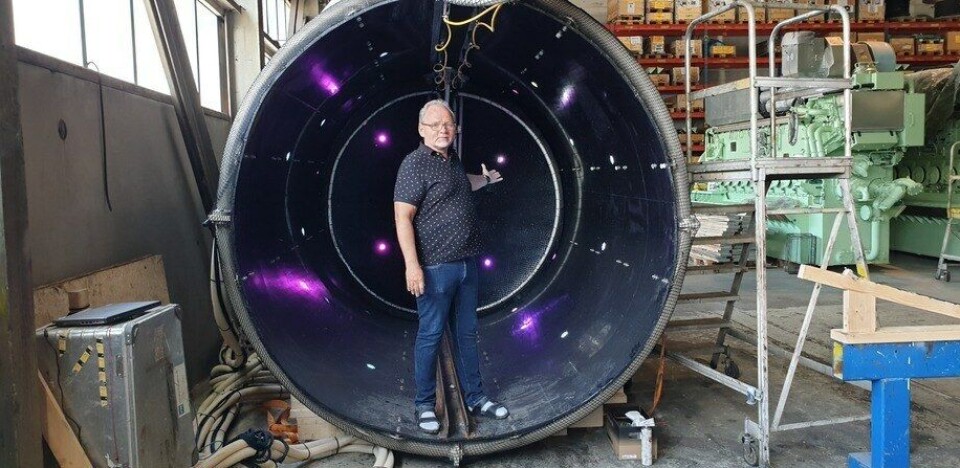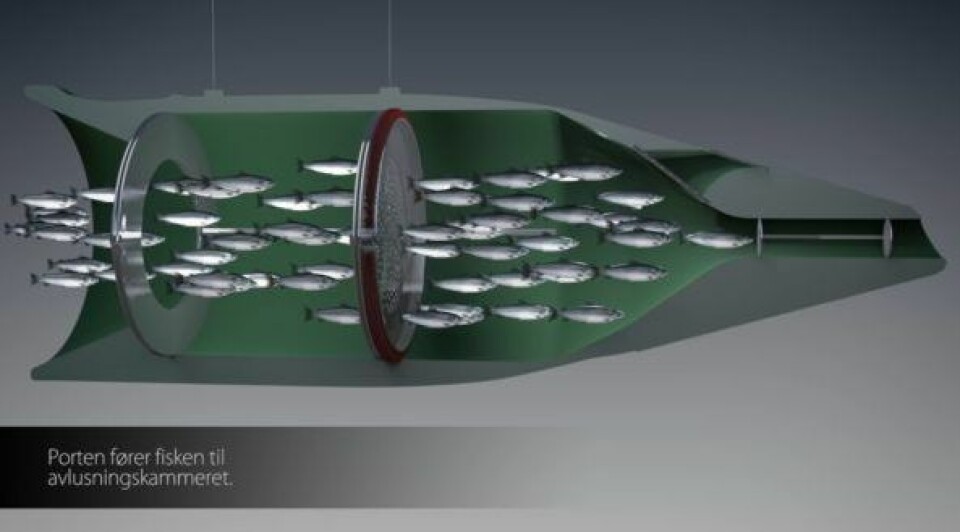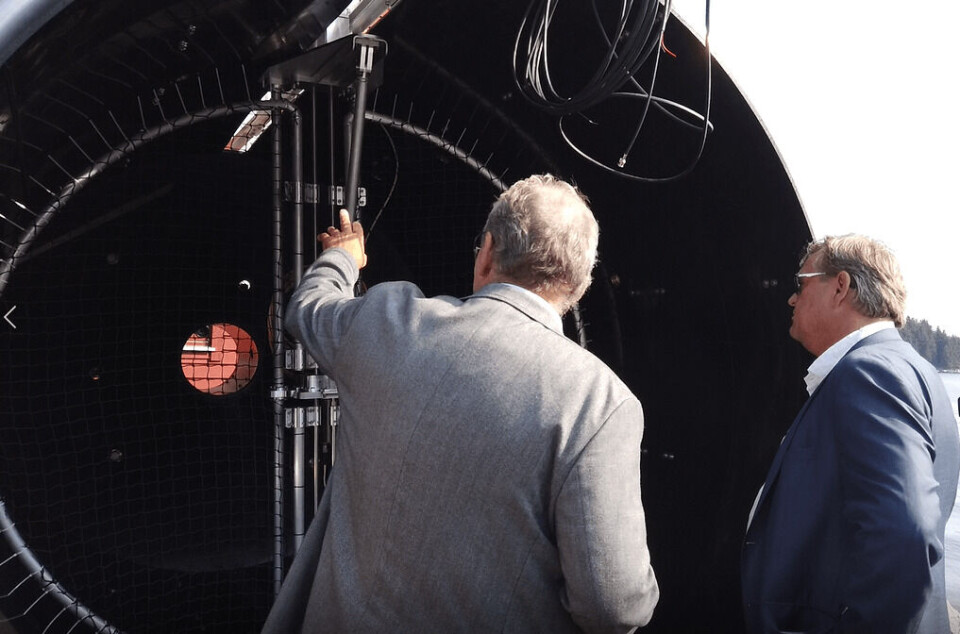
LiceTube creator puts invention up for sale
The inventor of the novel salmon farming lice solution LiceTube has put the project up for sale. Henry Helgheim says he doesn’t have the commercial expertise to take it to the next stage.
The LiceTube is placed in a pen, where the fish are attracted into the tube by means of special lights and counter current. The fish are then guided into a treatment chamber by means of sliding bulkheads.
In this chamber, all treatment is carried out, first and foremost de-lousing. Two tests have been carried out, in collaboration with and with financial support from Lerøy and Innovation Norway.

Patents granted
It should also be possible to obtain information such as length and weight of fish, injuries and deformities, and sexual maturity while they are in the treatment chamber. If a fish has lice, these will be detected quickly and efficiently removed. Treatment of lice is the priority in version 1. Once treated, the fish then exits the LiceTube at the far end.
The delousing method to be chosen has not been decided, but several alternatives that may be relevant are being considered.
Helgheim told Fish Faring Expert’s Norwegian sister, Kyst.no, that his team has received a patent for the unit in Norway and Chile and expect to get the same in several relevant countries eventually. LiceTube is owned by Helgheim through the company CLT Solutions AS.
He had many plans for the delousing unit, but the Covid pandemic turned many of these upside down.
“We were well under way, but it faded a bit. Because the world stopped a bit, the same happened with the road ahead for LiceTube,” he said.

Helgheim said there are two larger companies that wanted to collaborate with the remaining work, such as the completion of LiceTube, but the further they got in the process the more his eyes were opened to how much work this was going to be for him if he continued be a leader and owner, and at the same time build a solid and large organisation.
“I am an inventor, and not very good at administration,” he said. “I realise that I also do not have the expertise needed to build a sales organisation and infrastructure for production and sales, which should be planned in parallel with further development and testing on LiceTube, and until the finished sellable product.
“Tactical choices in development and a lot of administrative work are too demanding for me. At my age, I see this becoming too much. Especially when the inventor hat is to be taken off, this is just completely wrong for me to continue working on. In such a setting, I go from being enthusiastic to being more or less paralysed.”

Offers made
Although the prospect of taking the LiceTube to the next stage was tempting for Helgheim from a technical standpoint, he knows his limits.
“I am probably a little too little concerned with the financial upsides, though more concerned with the inventive. The inventor role is probably my place. I have therefore decided that now probably other companies which can handle this in a professional way should be on the field and complete what remains to be done.”
Helgheim has had offers but feels they’re not ideal.
“I have received a written offer from a private person who otherwise works in a larger company in the supplier industry. He understood how further development should be done, but I think the bid was probably too low, and it has been put on ice. Another company wanted to buy the patents.”
100% package
What Helgheim wants to do is to sell 100% of the hardware, prototype, patents and other intellectual property rights.
“Of course, I want the product to be realised, and I certainly believe that there are relevant companies that already want in, or suppliers who want new products. LiceTube has received great national and international media coverage, and I am absolutely sure that it will succeed. We have managed to prove what we need to prove in this case when it comes to what is of news value.”
The product and the technique work so far, he says, but emphasises that there is a good deal of programming, approvals etc., that must be carried out.
“In a market where a wave of recirculating aquaculture system facilities is being built, marine facilities, where the fish are in their proper element, remain relevant. There are still 8,000 cages in the world (4,000 of these in Norway) and there is also a focus on sea cages. It is cheaper to farm in the sea, compared to closed facilities on land,” said Helgheim.
“I choose to sell this myself, together with good legal help and sparring partners. I am optimistic - I have no reason for anything else.”























































